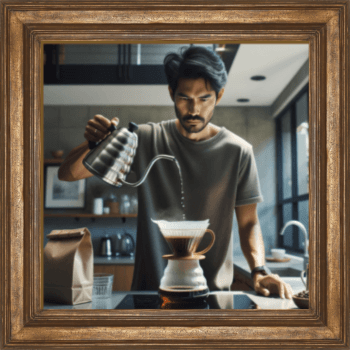If you purchase something from one of our links, we make a small commission. So in essence, you may have just got me a cup of coffee! Thank you! This will in no way have an impact on the price of the item...
You might have noticed the term ‘pour over’ gaining traction among coffee enthusiasts. So, what’s behind this buzz? Pour over coffee is a brewing technique that’s all about the hands-on approach to crafting a perfect cup. It isn’t just your average joe; it’s about meditative patience and precision that elevates this humble beverage to an art form.
Table of Contents
- Essentials for Pour Over Coffee
- The Step-by-Step Brewing Guide
- Troubleshooting Common Pour Over Coffee Problems
- Enhancing Your Pour Over Experience
You’re going to find out that this method isn’t a new trend; it’s a traditional approach that’s made a strong comeback. Why? Because pour over allows you to control every variable in the brewing process – from the grind size to the water flow – it’s a surefire way to unlock the full potential of your coffee beans.
Don’t worry too much about mastering this method right out of the gate. The pour over process welcomes beginners with its simple yet satisfying approach. Once you get the hang of it, you can always refine your technique to enhance your morning brew.
This is about taking your love for coffee to the next level. Trust me, your taste buds will thank you for the change. But before you can produce that stellar cup of coffee, you’ll need the right tools for the job. In the next section, I’m going to walk you through the essentials for crafting your pour over masterpiece.
Essentials for Pour Over Coffee
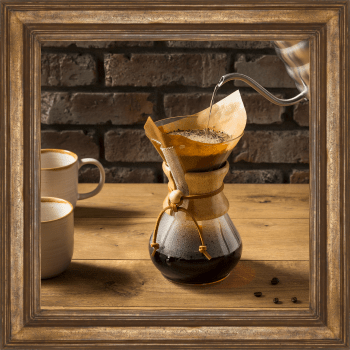
Getting your pour over coffee right starts with gathering the right gear. You won’t need a lot, but each piece plays a pivotal role in crafting that perfect cup. Let’s start with the very basics.
First up is a kettle, and not just any kettle, but one with a gooseneck spout. This design gives you control over the water flow and direction, which is crucial for pour over brews. The consistent pace and distribution of water can spell the difference between a good and a stellar cup.
Next, a scale. Precision matters here. While it might seem intricate to weigh your coffee, doing so ensures the right coffee-to-water ratio. This balance is the bedrock of a great tasting pour over.
Freshness is the name of the game when it comes to beans, so you’ll want a quality grinder. You’ll want a burr grinder to make sure it gives you even, consistent grinds.
Now, let’s talk about the pour over cone and filter. These come in various materials from paper to metal, each adding a unique character to the final brew. The cone holds the grounds while the filter ensures clarity by keeping sediment out of your cup.
Lastly, your bean selection. You might feel like a kid in a candy store with all the options, but choose something that resonates with you. Light, medium, and dark roasts all have their merits. And, if you’re questioning which beans to pick, don’t hesitate to ask a local barista; they’re full of knowledge.
Before we move on to the actual brewing process, it’s important to touch on the element that makes up most of your brew – water. Using filtered water at the right temperature can make or break your coffee’s taste, so pay attention to it.
So there you have it, your tool belt of essentials for stepping into the pour over coffee arena. Up next, I’m going to walk you through the step-by-step process of turning your coffee-making session into an art form as we delve into the brewing guide.
The Step-by-Step Brewing Guide
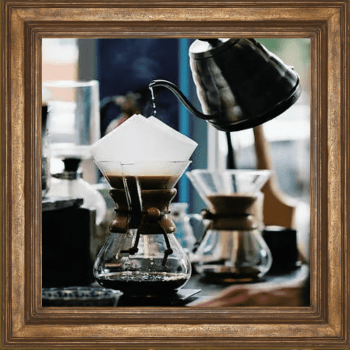
You’re probably eager to get started on your pour over coffee journey, so let’s get into the step-by-step brewing guide. Precision and patience are your best friends here. This isn’t just a brewing method; it’s a craft, and doing it right will make all the difference to your cup of joe.
First, you’ll want to measure your coffee beans. A good rule of thumb is to use about 1 gram of coffee for every 16 grams of water. To make things easier, I suggest investing in a good kitchen scale. Once measured, grind your beans to a medium-coarse consistency, similar to sea salt.
Now, let’s talk about the blooming phase. Wet the ground coffee just enough to saturate it, and let it sit for 30 seconds. This allows the coffee to ‘bloom’ and ensures better flavor extraction by letting the carbon dioxide escape.
When it comes time to pour, your technique matters. Start at the center, pour in a slow, circular motion to evenly saturate the grounds. The key is a steady, consistent flow. You’re aiming for all parts of the coffee to be extracted evenly. The total brew time should be about 3-4 minutes.
Remember, you can always adjust your approach later on. Tweak your grind size, pouring technique, and water temperature until you find what’s perfect for your taste. Your first attempt doesn’t need to be your last – practice will pave the way to your best brew.
Troubleshooting Common Pour Over Coffee Problems
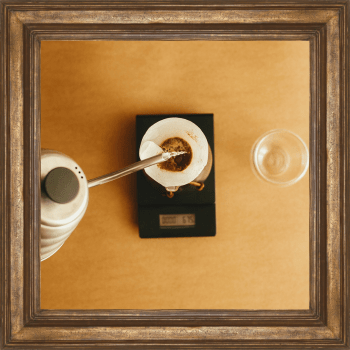
So you’ve tried your hand at making pour over coffee, and it didn’t quite hit the mark? Don’t worry too much about it. Brewing the perfect cup is a skill that requires some finesse, and even experienced baristas face challenges now and then. In this section, I’m going to help you navigate through some common issues and how to fix them, so you can enjoy that rich, flavorful cup of coffee you’re aiming for.
Let’s start with under-extraction. If your coffee tastes sour or too acidic, it’s a sign that the water hasn’t spent enough time with the coffee grounds. This usually means your grind is too coarse or your pouring too quick. The fix? Choose a finer grind, and slow down your pour to ensure the water can fully saturate the grounds.
On the flip side, if your coffee is overly bitter, we’re looking at over-extraction. Here, the water has spent too much time with the grounds, pulling out undesirable flavors. To correct this, go for a coarser grind or speed up your pour. And remember, your water shouldn’t be too hot as this can extract bitterness more quickly.
Achieving the right flavor balance can feel like a tightrope walk. Your grind size, water temperature, and pour speed are the three factors most likely to throw you off. If the coffee tastes weak and watery, consider using more coffee grounds or adjusting your pour to spend more time where it’s needed. For coffee that’s too strong or intense, do the opposite: use less coffee or a quicker pour.
You’re going to find out that, as with any craft, variances in your approach can yield a completely different product. Each adjustment you make can bring you closer to your preferred taste. You can always adjust your approach as you refine your palate and technique. Fine-tuning is part of the joy of pour over coffee.
Enhancing Your Pour Over Experience
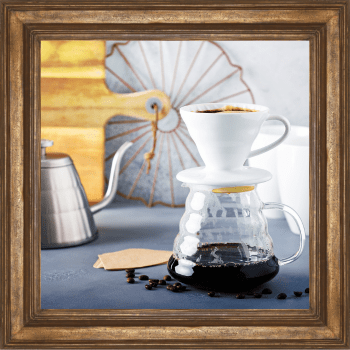
Choosing something that resonates with you when it comes to coffee is key. Pour over isn’t just about making a great cup of joe; it’s about the experience. Let’s talk about how you can take your pour over routine to the next level.
A lot is happening very quickly in the world of coffee, especially regarding coffee origins and roasts. Don’t be afraid to experiment. Try beans from different countries, each with its unique flavor profile, to see how they affect your brew. Light, medium, and dark roasts each bring something different to the table.
Your equipment can add a lot to your pour over experience as well. A beautiful carafe or a unique mug can make your morning coffee ritual feel special. Consider investing in a server with a wooden collar for aesthetics or a double-walled carafe to keep your coffee warm longer.
Finally, pour over coffee isn’t a solitary journey. There’s a vibrant community out there, online and maybe even in your local area. Sharing your experiences, challenges, and triumphs with others can hugely enhance your appreciation for pour over coffee. Join forums, attend workshops, and even host tasting sessions if you can.
I really hope that you’ve found some inspiration to refine and enjoy your pour over coffee ritual. Remember, the beauty of this method lies in its simplicity and the endless possibilities for personalization. Enjoy your brewing adventure!

Brandyn hails from Minnesota. His passions include, drawing portraits, Researching, Writing, and of course, COFFEE!!! When he’s not drinking coffee, he’s learning how to make his next cup even better. He writes down everything he learns and shares them on his website “ReigningCoffee.com”. If he’s not writing or researching, he’s probably drawing. His goal is to help you enjoy your coffee, even more than you already do.

